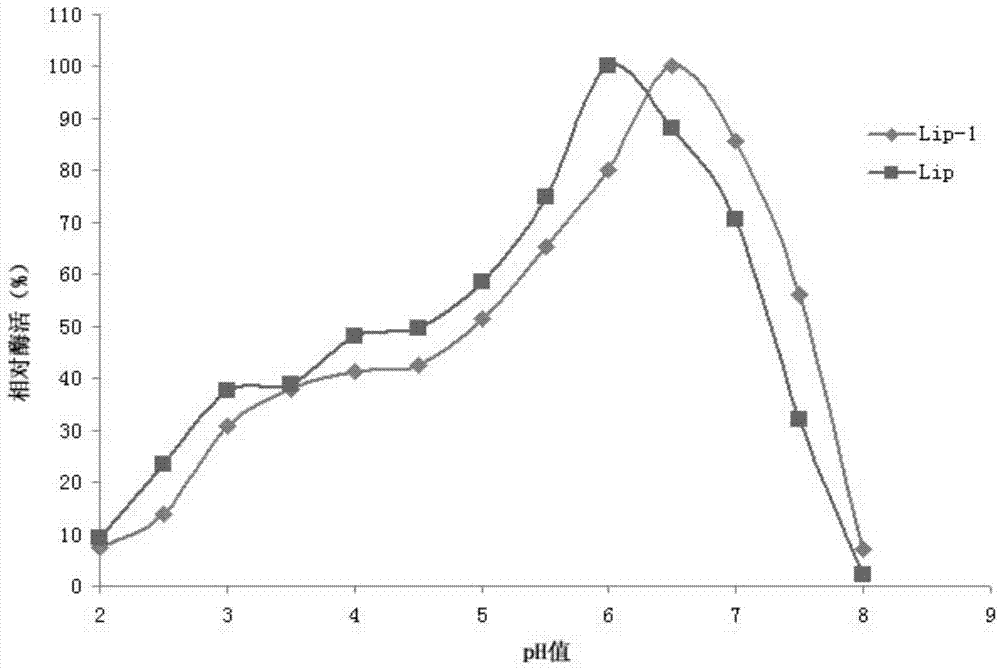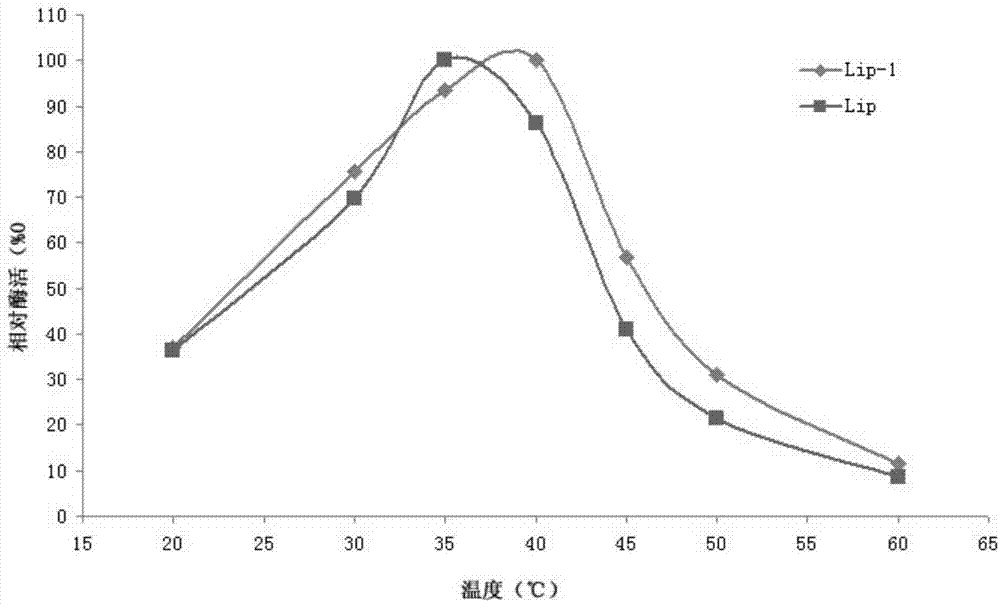Lipase and mutant thereof
A lipase and mutant technology, applied in the field of lipase and its mutants, can solve problems such as high probability, small workload, and no change in enzymatic properties, so as to reduce feed-to-meat ratio, improve production performance, and improve utilization rate Effect
- Summary
- Abstract
- Description
- Claims
- Application Information
AI Technical Summary
Benefits of technology
Problems solved by technology
Method used
Image
Examples
Embodiment 1
[0040] The amplification of embodiment 1 lipase gene
[0041] (1) Extract total genomic DNA from Aspergillus tubingensis
[0042]Aspergillus tubingensis was inoculated with shake flask medium for overnight culture, and an appropriate amount of bacteria was placed in a centrifuge tube, centrifuged at 13,000 rpm for 5 minutes, and the supernatant was discarded; 400 μl of extraction buffer (100 mM TrisHCl, 100 mM EDTA, 250 mM NaCl, 1% SDS ); then add 100mg of quartz sand or glass beads, shake vigorously in a bead beating instrument for about 2min; add 200μl 10MNH4AC in a water bath for 20min in a water bath at 65°C for 10min; centrifuge at 13000rpm for 10min to take the supernatant, then add 2 times the volume of absolute ethanol, Place at -20°C for 30min; centrifuge at 13000rpm for 10min, discard the supernatant, wash twice with 70% ethanol; air dry, add appropriate amount of water to dissolve and store at -20°C.
[0043] (2) Gene cloning
[0044] Using the extracted total gen...
Embodiment 2
[0051] Construction of embodiment 2 expression vector
[0052] The gene sequence SEQ ID NO:2 cloned in Example 1 was subjected to KpnI and XbaI double enzyme digestion overnight, and then the target gene fragment was recovered from the gel; similarly, KpnI and XbaI were performed on the Trichoderma expression vector pTG (containing hygromycin hph gene). XbaI double enzyme digestion and recovery; the recovered gene fragment and the vector were ligated overnight at 16°C, and transformed into E. coli DH5a, and finally the Trichoderma recombinant expression plasmids were obtained, which were named pTG-Lip-1.
[0053] Using the same method as above, a recombinant expression plasmid carrying SEQ ID NO:4 was constructed and named pTG-Lip.
Embodiment 3
[0054] Embodiment 3 transforms and screens
[0055] (1) Protoplast preparation
[0056] Inoculate Trichoderma reesei mycelium and grow on PDA plate for 4 days; cut out a colony with a diameter of about 3 cm and place it in about 60ml of YEG (0.5% yeast powder, 1% glucose) liquid medium, shake at 200rpm at 30°C Cultivate overnight; collect the mycelium by filtering with multi-layer gauze; place the mycelia in 10-20ml of lysing enzyme solution (SigmaL1412) for 2-3 hours to enzymatically hydrolyze; take out the enzymatic hydrolysis solution, add 0.7M NaCl solution, shake gently, and pour in Filter with three layers of sterilized lens tissue, collect the filtrate, centrifuge at 3000rpm for 10min; discard the supernatant, add 10-20ml STC solution (20% sucrose, 50mM Tris-Cl, 50mM CaCl 2 ) to suspend, then centrifuge at 3000rpm for 10min; add an appropriate amount of STC to suspend and aliquot (150μl / tube, 10 8 pieces / ml).
[0057] (2) Transformation and verification
[0058] Tak...
PUM
 Login to View More
Login to View More Abstract
Description
Claims
Application Information
 Login to View More
Login to View More - R&D
- Intellectual Property
- Life Sciences
- Materials
- Tech Scout
- Unparalleled Data Quality
- Higher Quality Content
- 60% Fewer Hallucinations
Browse by: Latest US Patents, China's latest patents, Technical Efficacy Thesaurus, Application Domain, Technology Topic, Popular Technical Reports.
© 2025 PatSnap. All rights reserved.Legal|Privacy policy|Modern Slavery Act Transparency Statement|Sitemap|About US| Contact US: help@patsnap.com



